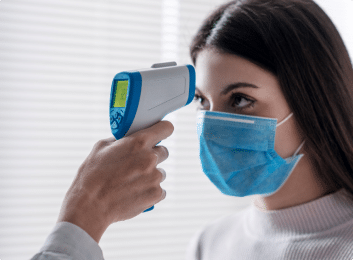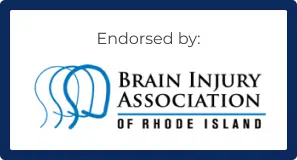Treatment For Traumatic Brain Injuries
Immediately after head trauma, treatment for a traumatic brain injury (TBI) primarily focuses on preventing additional brain damage and impairment. Surgical repair of the skull or broken blood vessels may also be performed. After the initial healing phase is complete, the objective of treatment is managing the long-term effects of TBI.
After a head injury that causes a TBI, medical care is necessary to assess the severity of the injury and help patients recover as much brain function as possible. In the case of a mild TBI, it’s still important to be evaluated by a health care provider for signs of a more severe injury. Treatment may simply involve rest and monitoring to ensure that pressure is not building up inside the skull.
In cases of severe traumatic brain injury, patients will usually be treated in an emergency department and then admitted to the hospital. The first goal of treatment is to stabilize the patient’s medical condition, such as their breathing, heartbeat, and blood pressure. Once the patient has been stabilized, then the care team will develop a plan for treating the TBI.
The initial phase of treatment, in the days and weeks following the injury, is aimed at repairing damaged tissues to the extent possible and reducing the amount of secondary brain injury that occurs. While the brain itself generally cannot be surgically repaired, skull fractures and damage to blood vessels may be addressed surgically.
After the initial healing phase is complete, the patient can begin the process of rehabilitation. Brain injury rehabilitation may involve the use of various therapies. Medications may be useful to manage any ongoing symptoms.
Initial Treatment Options For TBI
Treatment for a TBI will vary depending on the specifics of the injury. There are several treatment options, and patients are often treated using multiple methods. Each patient’s specific treatment plan will be determined by their medical team according to their individual needs.
According to the Centers for Disease Control and Prevention, “TBIs may be missed or misdiagnosed in older adults because symptoms of TBI overlap with other medical conditions that are common among older adults, such as dementia.”
This is especially concerning, warns the CDC, because older adults have a higher risk for head injury due to falls — a common cause of TBI — and bleeding in the brain, which may increase the severity of the injury and could be fatal.
“Falls are one of the leading causes of TBI-related hospitalizations among Americans, especially among older adults (age 75 years and older).”
— Centers for Disease Control and Prevention
Surgery
Surgical repair of the damage caused by a primary injury may be needed in some cases. For example, in the case of a skull fracture, a surgical procedure may be used to repair the injury and remove any pieces of skull that entered the brain. In the case of a torn artery, surgeons may be able to repair it and restore blood flow to the brain. This is a highly technical form of surgery that requires a surgeon who is skilled in this technique.

Surgery can also be used to relieve pressure on the brain. In the case of a hematoma (contusion) or hemorrhage, the blood may be drained surgically through a small hole in the skull. This helps to reduce the pressure inside the skull, preventing it from causing brain damage. When there’s severe swelling of the brain that is causing significant additional damage, surgeons may remove a small piece of skull. This creates a “window” that reduces the buildup of pressure. They may also drain some of the patient’s cerebrospinal fluid, which is a fluid normally found in and around the brain and spinal cord. Reducing the amount of cerebrospinal fluid can reduce the pressure inside the skull.
Surgery may also be used to place a device called an intracranial pressure (ICP) monitor. This is a small device inserted through the bone of the skull that allows health care providers to monitor the pressure inside the skull to determine when it’s rising too high and causing brain damage. An ICP monitor may be placed in people with more severe TBI to help doctors make decisions about the patient’s treatment.
Management of Body
Temperature
When the body gets warm, there is swelling of brain tissue. After a traumatic brain injury, it’s important to avoid any elevation of body temperature. If a person begins to develop a fever, doctors will use medications to keep the body temperature in the normal range.

In newborns with brain damage acquired during birth, therapeutic hypothermia may be used. For this technique, the body temperature is lowered to below normal and maintained there for a period of time before slowly rewarming the patient. However, this technique has not been shown to be beneficial in adult patients with TBI and is not currently recommended in this setting. Treatment is focused on keeping the body temperature from rising above normal but not on cooling it to below normal.
Medications
Although medication cannot reverse the damage caused by TBI, it may be useful to treat the symptoms of TBI and prevent secondary injury.
During the initial phase, medication options may include:
- Coma-inducing drugs, which are used to put someone into a medically-induced coma, or state of complete unconsciousness. This can allow the brain to rest and heal.
- Diuretics, which are medications that cause the body to lose water. By slightly dehydrating the body, these medications can reduce the pressure in the skull, which decreases the amount of secondary brain injury.
- Anticonvulsants, which are anti-seizure medications. Seizures commonly occur after a traumatic brain injury due to changes to the brain’s electrical signaling patterns caused by the injury. Severe seizures can cause additional brain injury and interfere with the brain’s healing process.
Rest
It’s important to allow the brain to rest and recover for a period of time following a TBI. This includes both physical and cognitive rest. A person will need to avoid physically demanding activities like exercise and take time away from cognitively demanding activities. This may require time off work, even for a person with a desk job. Avoiding screens during this time is also recommended.
The amount of time that a person needs to rest will vary depending on the specifics of the injury. A person with a mild traumatic brain injury (a concussion) may need only a few days of rest, while a person with a more severe injury may need to rest for a longer period.
Long Term Treatment For TBI
After the initial healing phase is complete, the patient can begin the process of rehabilitation. This often involves multiple types of therapy to work on regaining as much lost function as possible. Medications can also be helpful for the management of ongoing symptoms.

Rehabilitation
After the initial period of healing is complete, a person can begin rehabilitation for any remaining symptoms of the brain injury.
This may involve:
- Physical therapy – Improve overall strength, balance, and coordination
- Occupational therapy – Relearn and practice skills needed for the activities of daily living
- Speech therapy – Improve communication skills and learn to use assistive communication
devices - Recreational therapy – Improve function, reduce depression and anxiety and improve quality of life.
- Psychotherapy – Manage emotional and behavioral symptoms
- Cognitive therapy – Address memory loss, trouble focusing, and difficulty making decisions
Rehabilitation can begin while the patient is still in the hospital. Once the patient’s blood pressure and the pressure inside of the skull have stabilized, starting therapy may be an option. The decision of when to start rehabilitation is made on a case-by-case basis, and therapy will start when the patient and their care team feel that the patient is ready.
Although damage to the brain is generally considered to be permanent, the brain is a surprisingly flexible organ. While lost brain cells will not regrow, other parts of the brain may be able to take over the functions of the parts that were damaged. With appropriate rehabilitation, many people are able to recover at least some of their lost function over time. Some may eventually recover fully, while others will be left with permanent effects from their TBI.
Medications
In some cases, bothersome symptoms of TBI may continue after the initial healing phase is over. Some TBI patients continue to take medications on an ongoing basis to manage symptoms and improve their quality of life. Some of the medication options include:
- Antidepressants. Many traumatic brain injury patients struggle with depression. Severe
mood swings are also common, and antidepressants can also help to stabilize a person’s
mood. - Anti-anxiety medications. Some TBI patients experience extreme fear and worry and may
even have panic attacks. - Anticonvulsants (anti-seizure medications). Some people continue to experience seizures
after the initial healing period is complete and may need to keep taking anticonvulsants
over the long term. - Anticoagulants. Commonly referred to as “blood thinners,” anticoagulants prevent blood
clots. - Pain medications. Patients with traumatic brain injury may experience chronic pain, and
pain medications may be used to address this. - Antipsychotic medications. These can address issues like psychosis or agitation or may be
used for insomnia. - Memory drugs known as cholinesterase inhibitors. These drugs, originally developed for
- Alzheimer’s disease, may help with symptoms like memory loss or trouble paying attention.
- Muscle relaxants. In patients who experience severe muscle spasms or chronically tight
muscles, these drugs can be helpful.
Support Groups
After a TBI, many people find themselves feeling isolated. This can contribute to feelings like depression and anxiety and reduces the quality of life. Support groups can be helpful for connecting with others who have also experienced a TBI. This can also allow people to share advice and resources for coping with the lasting effects of TBI. Caregivers may also find it helpful to connect with others for support.
The Rhode Island Brain Injury Association has an in-person resource center located in Providence. The staff there can guide you to the resources that would be most useful for you. The Rhode Island Department of Health also offers a list of resources for people in the state who have suffered a TBI, as well as their caregivers.
The CDC notes that people who have sustained a moderate or severe TBI may need long-term medical care as they recover from their injury. The financial impact of a traumatic brain injury affects the victims and their family members. Let the renowned Rhode Island personal injury attorneys at Marasco & Nesselbush fight for you and your financial well-being.
Contact us today for a free case evaluation.

$4,500,000
Recovered for a client who sustained a traumatic brain injury in a car crash.
DO I HAVE A CASE?
If you think you may have a TBI case, contact us now for a FREE consultation